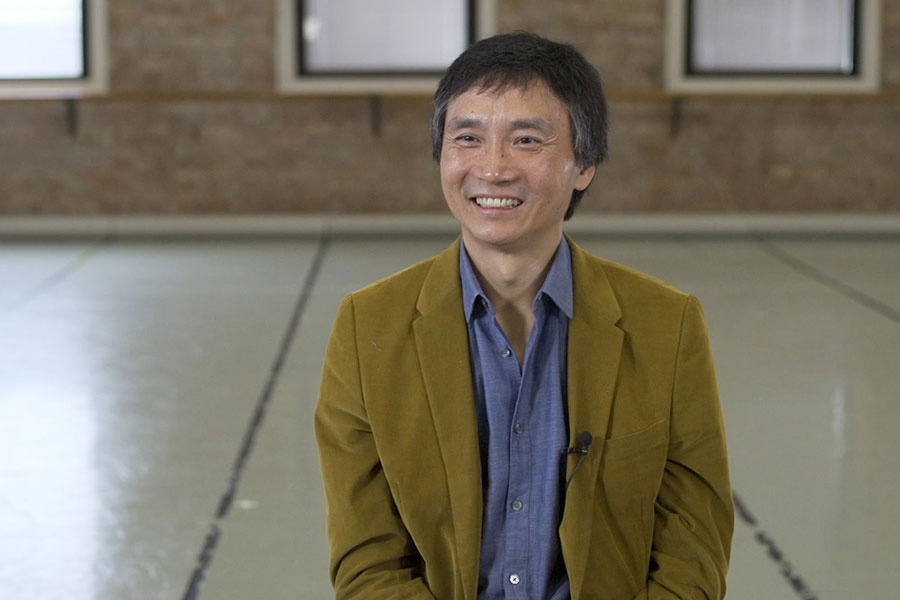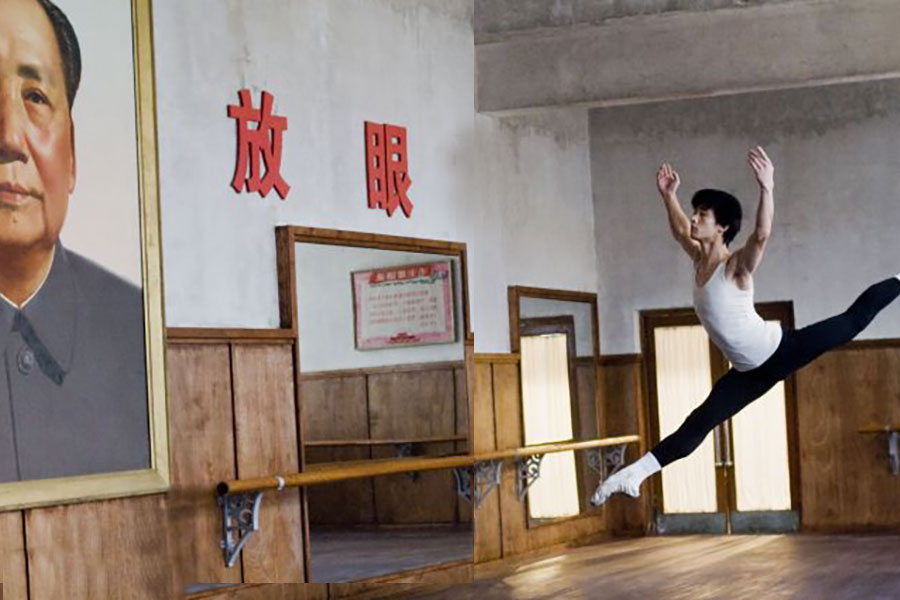One day in 1972 in the rural province of Qingdoa, China, a delegation from Madame Mao’s Beijing Dance Academy arrived at a commune school to find suitable children to study ballet and pledge allegiance to Chairman Mao’s revolution.
They walked past a quiet eleven year-old boy named Li Cunxin without taking much notice, but just as they were about to leave, his class teacher hesitated, and then suddenly tapped the delegation head from Beijing on the shoulder. Pointing out Cunxin, she asked, “What about that boy over there?”
And so began Cunxin’s remarkable journey, immortalized in his 2003 international bestselling autobiography, Mao’s Last Dancer, and later turned into a feature film of the same name. Born into bitter poverty, where the peasants in his village sometimes ate tree barks to survive, Cunxin left home with the officials from Beijing to begin a harsh seven-year training regime that started at 5.30am and ended at 9pm, six days a week. Once he’d discovered his passion for dance, he worked hard and would practice his turns at night by candlelight, hopping on one leg up and down a flight of stairs, with heavy sandbags tied to his ankles, to build his leg strength.
He’d rise at 5am most mornings when others were still asleep. With incredible determination, resilience and perseverance Cunxin eventually graduated as one of the best dancers in China and was discovered by Ben Stevenson, one of the world’s most respected teachers, choreographers and Artistic Director of the Houston Ballet. Stevenson was part of the first U.S. cultural delegation to visit communist China, where he met Cunxin, who in turn became one of the first exchange students under the Mao regime allowed to travel to the U.S. to study.
While in the U.S. he began to question his allegiance to the Chinese Communist Party, and began a relationship with an aspiring American dancer, Elizabeth Mackey, whom he married in 1981. While at the Chinese Consulate in Houston one day he was detained by Chinese officials. A major standoff between the Chinese and the American governments ensued with George Bush senior, then US Vice President, intervening.
FBI agents surrounded the Consulate and protracted negotiations between the two countries began. The incident turned into a defection and made headlines across the world. Twenty-one hours later Cunxin walked out of the Chinese Consulate a free man. After dancing with Houston Ballet for 16 years he guest performed around the world with some of the best ballet companies, winning multiple awards.
While dancing in London, he fell in love with Australian born ballerina, Mary McKendry, whom he married, later moving to Melbourne with their two children. Cunxin is now Artistic Director of the Queensland Ballet and spoke to Real Leaders about the leadership lessons he has learnt on this incredible journey.

What lessons have you learnt in life that makes tackling adversity somewhat easier?
I rely on determination, clear vision and never taking no for an answer. You should never give up the pursuit of what you’re trying to achieve and should work hard to make your dreams come true. When some people are faced with defeat they just throw in the towel and allow the circumstances to overwhelm them. In the process of losing yourself you also lose your self-belief. A long as you don’t give up, you have a fighting chance and a good chance of overcoming adversity.
How you would apply that advice to running a business? You moved into the world of finance for a while too I believe?
I was immersed in the world of stockbroking for a while but have come back to ballet again. I’ve done a 180-degree transition! Ballet is something for which I feel much love and wanted to give something back to the profession. It’s an art form that has given me so much. If you’re going to be an effective CEO you need to be inspirational. As much as you need to inspire others, it’s also important to inspire and motivate yourself too. The leader within you must be inspired to get up every morning and be inspired about what you’re doing and what you’re about to achieve.
You should lead by example and be sensitive to the needs of others. CEOs are usually very good in the business sense, but often lack emotional intelligence. If you’re missing these qualities you can’t be an effectual leader. I believe you should look at things from outside of the box and not be boxed in by it.
It’s a quality all leaders in businesses should have. The reason for my transition from ballet into finance was a simple and necessary one. When I moved to Australia at age 35, I realized I needed to support two families – my wife and three kids in Australia and my six brothers and parents in China. I felt I needed to give them the best possible opportunities to succeed in society. I had also promised myself at an early age that I wanted to help my brothers and my parents.
My lifelong dream was to help them. Supporting two families was really my only reason for going into the financial world. I went to a lot of investment seminars and started reading The Wall Street Journal before my English was good enough. I made good friends with a few board members of the Houston Ballet who happened to be successful CEOs and investment bankers and I probably annoyed them by asking endless questions!
What would you say is wrong with business in the world today?
A lot of them have become too bureaucratic and process driven, at the expense of spontaneity and creativity. When you’re too set in a process of doing ‘this’ and having to do ‘that,’ you lose flexibility. When change happens and hurdles loom people are often just flabbergasted because they aren’t prepared mentally to adapt to the new situation. The Harvard or Stanford approach will often show you a certain way of doing things, rather than having a holistic or flexible approach to life.
You met your wife through ballet and danced and worked together. Do you think it’s a good idea to work so closely with someone you love?
You can’t give a blanket answer to that as it really depends on the type of people involved. Working with people is one of the most challenging and difficult things you can do because we’re all individual. Human beings are the most complex species in the world, and when you add love to the mix, and work with somebody very close, it can be even more challenging. In my case, my wife and I were dance partners before we became lovers and developed incredible respect for each other professionally.
We were brutally honest with each other around areas that needed improvement, so we became best friends. We built an incredible chemistry and trust through dance. Mary gave up her dancing career after the birth of our daughter, Sophie, who was born deaf. She sacrificed her career, despite being a fabulous dancer, to help our daughter learn to listen and speak.
After many years of professional separation, we’re now working back together again at Queensland Ballet, with Mary teaching and coaching. We don’t dance together anymore, but prefer rather to inspire, nurture and help young artists realize their dreams. Ballet companies are very much like a close family. Over time, you build up a mutual respect and caring towards each other. Of course, there’s incredible competition and camaraderie, but respect and care come to the forefront.
You’re such a big role model for many people, but who do you look up to? Who are your role models?
I admire people like Ghandi and Nelson Mandela – people with vision, strength and compassion. Both had emotional intelligence too. A real leader has to have incredible honesty, integrity, and dignity in what they do. You have to be an honest person and someone with a big vision. You should have such strong self-belief that you’ll not be swayed by anything when things get tough.
What advice do you have for young people in China today? Is China a very different place from when you grew up there?
My advice is for young people to broaden their horizons and look at the world as their oyster – not just China. There’s a danger of complacency growing in China among young people. It might be because of Chinese government owned media outlets feeding the same information to everyone and a new generation growing up to believe that China is the most wonderful, most powerful and most successful place on Earth. Their vision is limited within China, rather than them having a global picture in mind. Also, they should never forget their history.
How is your role as Artistic Director of Queensland Ballet turning out?
Before I took over three years ago it was one of three classical ballet companies in Australia and the smallest and weakest. It was certainly considered the poor cousin of the performing arts sector in the state, let alone Australia. I had a huge and very daring vision: to build Queensland Ballet into an international standard ballet company.
Over the last two years we’ve virtually doubled our revenue and in my first year we had 115 sold-out performances, with 15 shows added due to strong demand. I had a strong and clear vision and was at pains to communicate this to my whole organisation and the market. The more effectively I communicated my vision, the more I found people willing to help me on my journey. It’s about motivation, inspiration and giving people a magical imaginative.
What is different about your management style? Many Artistic Directors are not really interested in the business part of a company. I do a lot of fundraising so having my financial experience has been a huge benefit. Because of my book and movie, that had a huge impact around the world, there was a huge expectation for me to deliver something special. People knew me as Mao’s Last Dancer and couldn’t believe that I was willing to get involved in very small company such as Queensland Ballet.
Everyone was watching carefully to see what would happen, but that’s not what I cared about. Instead, I focused on daily tasks and concrete goals. For example, in 2012 we had around 1,700 season ticket subscribers and after I came onboard we increased to over 7,100 subscribers. It’s an incredible turnaround that everyone’s talking about and the success belongs to the entire team at Queensland Ballet.




































